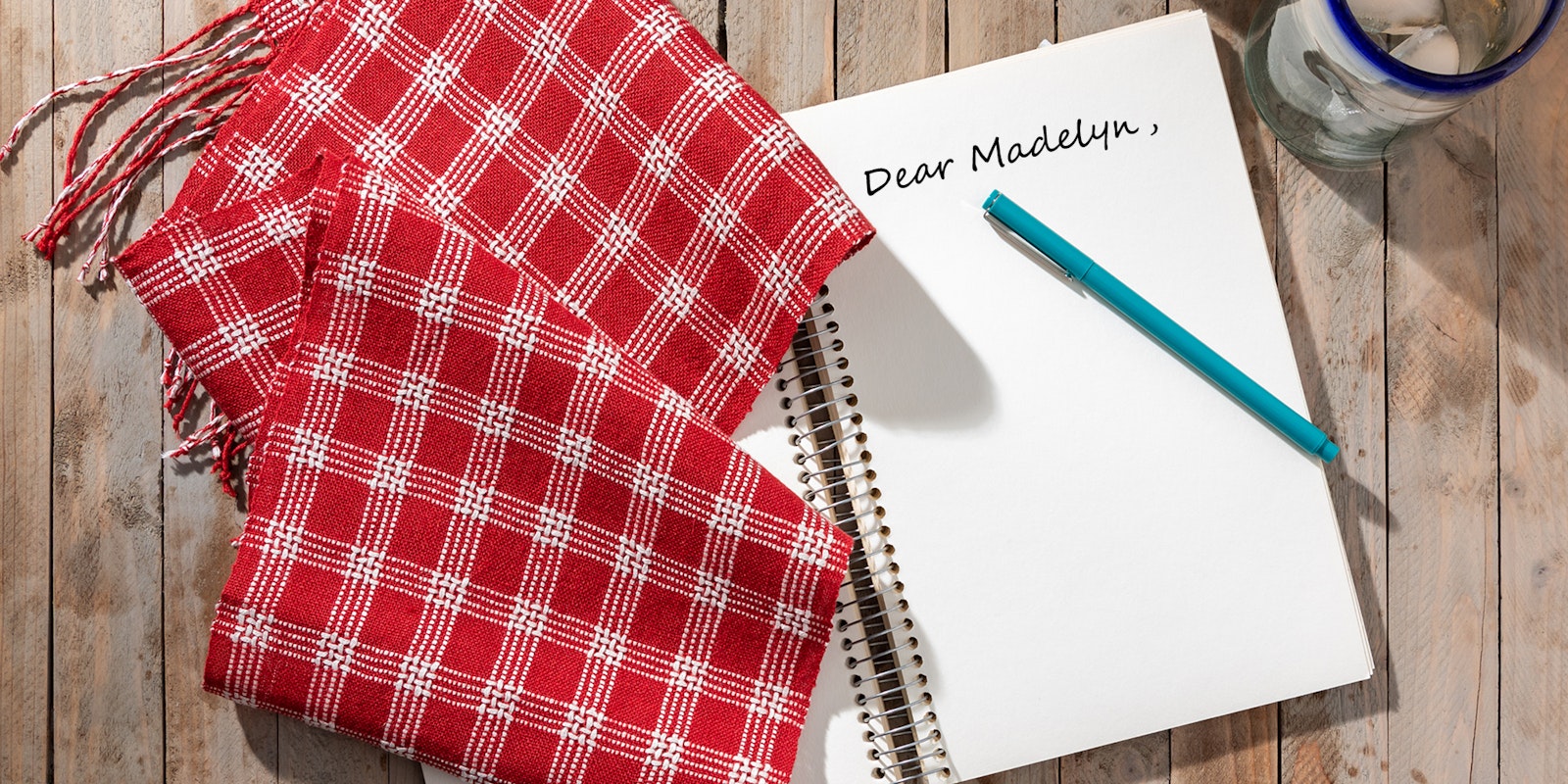Hi Madelyn,
Why do my threads break on the selvedges and in other locations on my large floor loom and not on my much smaller loom? This happens especially with fine threads. I can see wear and tear on the selvedge threads, but not on the others. Greetings,
—Ineke
Hi Ineke!
It is hard to say for sure without really seeing what is happening. But here are some thoughts.
The selvedge threads show wear and eventually break from draw-in, as you probably surmise. Especially if you are weaving with fine threads, you should use a temple (stretcher) that stretches the cloth to the width of the warp in the reed. In that way, the beater moves through the selvedge threads without rubbing on any of them. That will be true for the other threads, too. If they are all kept parallel to each other, the reed won’t rub on them.
Rubbing is what usually causes threads to wear and break. For threads elsewhere in the warp, it could be that you need to advance the warp much more often (which you probably do on your smaller loom). If the threads are being moved up and down by the shafts in the same spot over and over (especially with Texsolv or string heddles), that could be wearing them enough to break them. Advance the warp (and the temple) every inch to see if that makes a difference. If breakage continues to happen, check where the threads are breaking to determine what might be causing excessive wear.
(Another reason you might have less breakage on your smaller loom is that draw-in is always greater on wider warps than on narrower ones.)
Hope this helps!
Madelyn
If you have a weaving question we would love to hear from you! Please email Madelyn!
Posted July 11, 2014. Updated May 8, 2017.

